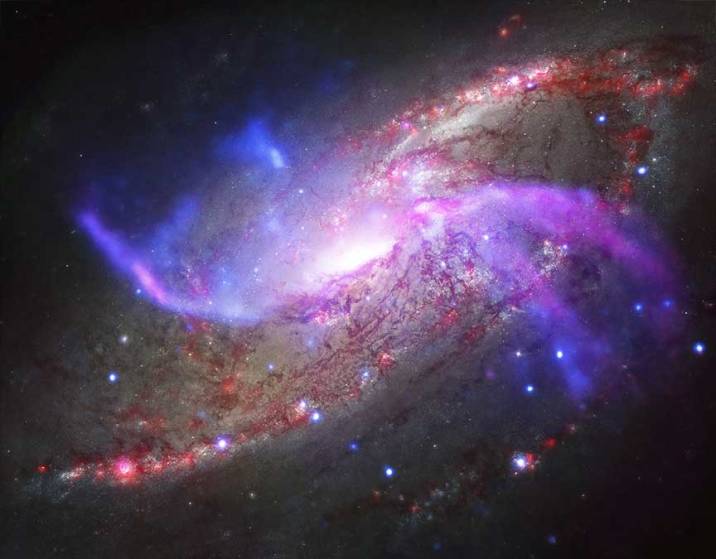
(Chandra X-Ray Observatory/Caltech/NASA public domain)
Some passages from Alister E. McGrath, A Fine-Tuned Universe: The Quest for God in Science and Theology (Louisville, KY: Westminster John Knox Press, 2009):
The topic of this book is the quest for God in the natural sciences and Christian theology, traditionally known as “natural theology.” Although this has been a subject of human interest since the dawn of recorded history, it has been given a new injection of intellectual energy in recent years by theologians and philosophers, but above all by natural scientists. Natural theology languished in the intellectual doldrums for much of the twentieth century, especially within Protestantism. It was seen as tired and stale, a relic of a less-critical age in theology and a more-credulous age in science. The relentless advance of scientific explanation, matched by a corresponding retreat by Christian theology from the public domain, meant that natural theology seemed to be beached on the sand, left stranded as the tide that had once lent it such intellectual buoyancy had slowly ebbed away.
Yet there is every sign that natural theology is now emerging from its period of eclipse. There is growing sympathy for the view that natural theology can provide a deeper understanding on fundamental issues such as the fine-tuning of the universe, where science can “throw up questions that point beyond itself and transcend its power to answer.” (ix-x)
The fundamental thesis of the book is that if nature is to disclose the transcendent, it must be “seen” or “read” in certain specific ways — ways that are not themselves necessarily mandated by nature itself. (x)
The enterprise of natural theology is thus one of discernment, of seeing nature in a certain way, of viewing it through a particular and specific set of spectacles. (x)
I do not argue that fine-tuning represents a proof of the Christian belief in God; I nevertheless insist that it is consonant with the Christian vision of God, which is believed to be true on other grounds, in that it offers a significant degree of intellectual resonance at points of importance. While this “proves” nothing, it is nonetheless deeply suggestive. Might it be, to use the luminous phrase of C. S. Lewis, a “clue to the meaning of the universe”? (xii-xiii, italics in the original)
The central argument of this book is simple: that certain facts are observed which are indeed “surprising.” Yet we can easily imagine a standpoint from which they are not surprising and might even be anticipated. (xiii)












